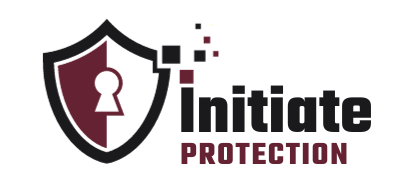Welcome to the digital age, where online shopping has become a part of our daily lives. With the convenience it brings, there are also concerns about the safety of our personal and financial information. Whether you’re an avid online shopper or just starting out, this guide will equip you with the knowledge and tips to make your online shopping experience secure and worry-free.
What is Online Shopping?
Online shopping is the act of buying goods or services through the internet. This method allows individuals to browse a vast selection of products, compare prices, and make purchases all from the comfort of their own homes. Due to its convenience and accessibility, online shopping has gained popularity in recent years. It offers advantages such as time-saving and avoiding crowded stores. However, it is crucial to take necessary precautions to safeguard personal and financial information while engaging in online shopping. A helpful tip is to always verify that the website you are using has secure payment options and a reputable reputation.
How Does Online Shopping Work?
Online shopping has become increasingly popular, but how does it actually work? Let’s break it down into a simple step-by-step process:
- Find a reputable online store or marketplace.
- Browse and select the items you want to purchase.
- Add the items to your virtual shopping cart.
- Proceed to the checkout page and enter your shipping and payment details.
- Review your order and confirm the purchase.
- Receive a confirmation email with your order details.
- Wait for your package to be delivered to your doorstep.
Now, let me share a true story to illustrate how convenient online shopping can be. Sarah needed a new laptop for her studies but couldn’t find one in local stores. She turned to online shopping and found the perfect laptop at a great price. With a few clicks, she completed her purchase and received the laptop within days, allowing her to continue her studies without any delays.
What Are the Benefits of Online Shopping?
Online shopping has become an integral part of our daily lives, offering a convenient and efficient way to purchase goods and services. In this section, we will discuss the various benefits that online shopping has to offer. From the convenience of shopping from home to a wider selection of products and lower prices, we will explore how online shopping has revolutionized the way we shop. So, let’s dive in and discover the many advantages of online shopping.
1. Convenience
Convenience is one of the key benefits of online shopping. Here are some steps to make your online shopping experience more convenient:
- Find a reliable online shopping website or app that offers a wide range of products.
- Create an account on the platform and save your payment and shipping information for quicker checkout.
- Browse through the various product categories or use the search function to find the items you need.
- Read product descriptions, customer reviews, and ratings to make informed purchasing decisions.
- Add the desired items to your virtual shopping cart.
- Proceed to the checkout page and review your order details.
- Choose a convenient payment method, such as credit card or digital wallet.
- Provide your shipping address and select a delivery option.
- Confirm your order and make the payment.
- Receive order confirmation and track the delivery status.
2. Wider Selection of Products
Online shopping offers a wider selection of products to choose from, providing consumers with a range of options and access to items from around the world. Here are some steps to take advantage of this aspect:
- Research: Use online search engines and shopping platforms to explore different brands, retailers, and marketplaces.
- Compare: Compare prices, features, and customer reviews across different websites to find the best deals and quality.
- Specialty stores: Seek out niche online stores that specialize in specific products or categories for unique and hard-to-find items.
- International options: Explore international websites or platforms to discover products that may not be available locally. In fact, according to a survey, 62% of online shoppers enjoy the convenience of having a wider selection to choose from.
3. Lower Prices
Lower prices are one of the main advantages of online shopping. Here are some steps to finding great deals:
- Compare prices: Utilize price comparison websites or browser extensions to compare prices across different online retailers.
- Sign up for newsletters: Subscribe to newsletters of your favorite online stores to receive exclusive discounts and promotions.
- Look for coupons and promo codes: Search for coupons and promo codes that can be applied during the checkout process to get extra discounts.
- Shop during sales events: Take advantage of major sales events like Black Friday or Cyber Monday to score big discounts on a wide variety of products.
- Consider refurbished or open-box items: These items are often significantly cheaper than brand new ones and can still be in excellent condition.
Online shopping has transformed the retail industry, providing consumers with access to a diverse range of products at lower prices. With the rise of e-commerce giants like Amazon and the increasing competition among online retailers, shoppers have reaped the benefits of more affordable options and increased convenience.
What Are the Risks of Online Shopping?
With the convenience and accessibility of online shopping, it has become a popular choice for many consumers. However, it’s important to be aware of the potential risks that come with this modern way of shopping. In this section, we will discuss the various risks of online shopping and how they can affect you as a consumer. From identity theft to fraudulent websites and delivery issues, it’s crucial to understand these risks and take precautions to protect your online shopping experience.
1. Identity Theft
Identity theft is a serious risk when shopping online. Protect yourself with these steps:
- Keep personal information private: Avoid sharing sensitive details like Social Security numbers or passwords.
- Shop on secure websites: Look for the padlock icon in the address bar and “https” in the URL.
- Use strong passwords: Create unique, complex passwords for each online account.
- Be cautious of phishing scams: Avoid clicking on suspicious links or providing personal information in response to unsolicited emails.
- Monitor your financial statements: Regularly review bank and credit card statements for any unauthorized charges.
2. Fraudulent Websites
Fraudulent websites pose a risk to online shoppers. To protect yourself, follow these steps:
- Verify the legitimacy of the website by checking for secure connections (https://) and valid contact information.
- Research the reputation of the website by reading reviews and looking out for any red flags.
- Avoid clicking on suspicious links or pop-up ads.
- Be cautious when providing personal and financial information, especially if the website seems untrustworthy.
- Regularly monitor your bank statements for any unauthorized transactions.
Remember, it’s always better to be safe than sorry when it comes to online shopping. Stay vigilant and trust your instincts.
3. Delivery Issues
Delivery issues can be a common concern when shopping online. To avoid these problems, follow these steps:
- Choose reputable sellers with a history of delivering items on time.
- Review shipping policies, including estimated delivery times and options for faster shipping.
- Ensure that you provide accurate and complete shipping information to ensure that your package is delivered correctly.
- Keep track of your package by using the provided tracking number to stay informed of its location.
- If there are any delays, damages, or missing items, contact customer service immediately.
How to Stay Safe While Shopping Online?
In today’s digital age, online shopping has become a convenient and popular way to purchase goods and services. However, with this convenience comes the risk of online fraud and identity theft. In this section, we will discuss the essential measures you should take to ensure a safe and secure online shopping experience. From using trusted websites to avoiding public Wi-Fi for transactions, we will cover the top tips for staying safe while shopping online.
1. Use Familiar and Secure Websites
To ensure the safety of your personal and financial information when shopping online, it is crucial to use familiar and secure websites. Here are steps you can follow:
- Stick to reputable websites such as Amazon or eBay.
- Look for secure website indicators like “https://” and a padlock icon in the address bar.
- Read reviews and check ratings to verify the trustworthiness of the website.
- Avoid clicking on suspicious links or pop-up ads.
- Keep your antivirus software up to date to detect and prevent malware.
In 2013, Target experienced a major security breach where hackers gained access to customer data, including credit card information, affecting millions of customers. It is important to be cautious and take necessary precautions when shopping online to prevent such incidents from happening again.
2. Look for the Padlock Icon
When shopping online, it’s important to look for the padlock icon in the browser’s address bar. This indicates that the website has a secure connection, protecting your personal and financial information.
- Check for the padlock icon before entering any sensitive information.
- Ensure that the icon is located next to the website address, indicating a secure connection.
- Avoid entering personal details or making payments on websites without the padlock icon.
- Be cautious of websites with outdated or expired security certificates.
- When in doubt, contact the website’s customer support for clarification.
Jane was shopping online for a new laptop. She noticed that the website she was on did not have the padlock icon. She decided to exit the website and find a reputable online retailer instead. By following the second tip, “Look for the Padlock Icon,” Jane protected herself from potential fraud and ensured a secure online shopping experience.
3. Use Strong Passwords
Creating strong passwords is essential for secure online shopping. Follow these steps to ensure your passwords are strong:
- Include a combination of uppercase and lowercase letters.
- Incorporate numbers and special characters.
- Avoid using personal information or common words.
- Create a unique password for each online account.
- Consider using a password manager to securely store and generate passwords.
4. Avoid Public Wi-Fi for Transactions
When shopping online, it’s important to protect your sensitive information by avoiding using public Wi-Fi for transactions. Here are some steps to follow:
- Connect to a secure and private network, such as your home or work Wi-Fi.
- If you have to use public Wi-Fi, use a virtual private network (VPN) to encrypt your data.
- Avoid entering personal and financial information on websites when connected to public Wi-Fi.
- Wait until you’re on a secure network before making any transactions.
- Be cautious of any suspicious activity or requests for personal information when using public Wi-Fi.
5. Keep Your Devices and Software Updated
Keeping your devices and software updated is crucial for secure online shopping. Here are steps to follow:
- Enable automatic updates on your devices and operating systems.
- Regularly update your web browsers to ensure they have the latest security patches.
- Install reputable antivirus and anti-malware software and keep them up to date.
- Enable automatic updates for your installed apps.
- Regularly check for and apply updates to your device’s firmware.
By regularly updating your devices and software, you ensure that you have the latest security features and patches, reducing the risk of vulnerabilities that can be exploited by hackers. This is especially important in light of the 2017 WannaCry ransomware attack, which infected hundreds of thousands of devices worldwide by exploiting a vulnerability in outdated versions of Microsoft Windows. Stay safe while shopping online by following these steps to keep your devices and software up to date.
What Are the Best Practices for Secure Online Shopping?
When it comes to online shopping, security is always a top concern. With the rise of cybercrime and data breaches, it is important to know the best practices for keeping your personal and financial information safe while making purchases online. In this section, we will discuss the most effective ways to ensure secure online shopping. From using credit cards instead of debit cards to utilizing two-factor authentication, we will cover the top tips to protect yourself while shopping online.
1. Use Credit Cards Instead of Debit Cards
When shopping online, it is generally safer to use credit cards instead of debit cards due to the added protections and fraud liability policies provided by credit card companies. Here are some steps to follow:
- Check your credit card’s fraud protection policies and liability limits.
- Set up alerts and notifications for any suspicious activity on your credit card.
- Regularly monitor your credit card statements for any unauthorized charges.
- Be cautious of sharing your credit card information on unsecured websites.
- Consider using virtual credit cards or one-time use credit card numbers for added security.
2. Check Your Statements Regularly
Checking your statements regularly is crucial in ensuring the security of your online shopping experience. Here are some steps to follow:
- Keep track of your online purchases, noting the date, amount, and merchant.
- Regularly review your bank and credit card statements to verify the accuracy of charges.
- Report any suspicious or unauthorized transactions to your bank or credit card company immediately.
- Consider setting up alerts or notifications for any activity on your accounts.
- Monitor your credit report regularly to detect any fraudulent activity.
Remember, remaining vigilant and proactive in monitoring your statements can help protect you from potential fraud or unauthorized charges.
In a similar tone of voice, here’s a true history related to online shopping:
In 2014, a hacker named Albert Gonzalez was arrested for orchestrating one of the largest identity theft schemes in history. He stole millions of credit card numbers by hacking into major retailers’ networks, causing billions of dollars in damages. This incident highlighted the importance of regularly checking statements for unusual activity and prompted increased security measures in the online shopping industry.
3. Be Cautious of Phishing Scams
Phishing scams are a common risk when shopping online. Protect yourself with these steps:
- Be cautious of unsolicited emails or messages asking for personal information.
- Verify the legitimacy of the website by checking the URL and looking for secure website indicators.
- Never click on suspicious links or download attachments from unknown sources.
- Keep your computer and antivirus software updated to prevent malware attacks.
- Use strong, unique passwords for each online account and enable two-factor authentication whenever possible.
4. Use a Virtual Private Network
Using a virtual private network (VPN) is a crucial step in guaranteeing a safe and secure online shopping experience.
- Research and select a reputable VPN provider.
- Install the VPN software on your device.
- Connect to a VPN server to establish a secure and encrypted connection.
- Make sure that the VPN is active before beginning your online shopping session.
- Shop on websites with HTTPS encryption for an additional layer of security.
Pro-tip: Always keep your VPN software up-to-date to take advantage of the latest security enhancements and safeguard your personal information.
5. Use Two-Factor Authentication
Using two-factor authentication is a crucial step in ensuring the security of your online shopping experience. Follow these steps to enable two-factor authentication and safeguard your accounts:
- Go to your account settings.
- Select the option for two-factor authentication.
- Choose your preferred method, such as receiving a verification code via SMS or using an authenticator app.
- Follow the prompts to set up two-factor authentication for your account.
- Once set up, you will be required to enter a verification code in addition to your password when logging in.
- Keep your authentication method secure and do not share it with anyone.
- Regularly check for any suspicious activity on your account.
By implementing two-factor authentication, you add an extra layer of security to your online shopping accounts, reducing the risk of unauthorized access.
Frequently Asked Questions
What is ‘The Ultimate Guide to Secure Online Shopping’?
‘The Ultimate Guide to Secure Online Shopping’ is a comprehensive guide that provides tips and strategies for ensuring a safe and secure online shopping experience. It covers important topics such as choosing secure websites, protecting personal information, and avoiding scams.
Why is it important to shop securely online?
Shopping securely online is important because it helps protect your personal and financial information from potential hackers and scammers. It also ensures that your purchases are legitimate and your sensitive information is kept safe.
How can I tell if a website is secure?
A secure website will have a URL starting with “https” instead of just “http”. It will also have a lock icon in the address bar and a security certificate displayed on the website. These indicators show that the website is using encryption to protect your information.
What are some ways to protect my personal information while shopping online?
Some ways to protect your personal information include using strong and unique passwords, avoiding public Wi-Fi when making purchases, and regularly checking your bank and credit card statements for any unauthorized charges.
What should I do if I suspect a website or seller is fraudulent?
If you suspect a website or seller is fraudulent, do not make any purchases and immediately report it to the appropriate authorities. You can also contact your bank or credit card company to alert them of any suspicious activity.
Are there any additional precautions I should take when shopping on my mobile device?
Yes, when shopping on your mobile device, be sure to download apps and make purchases from trusted sources only. Keep your device and apps up to date to prevent security vulnerabilities, and avoid using public Wi-Fi networks for sensitive transactions.







